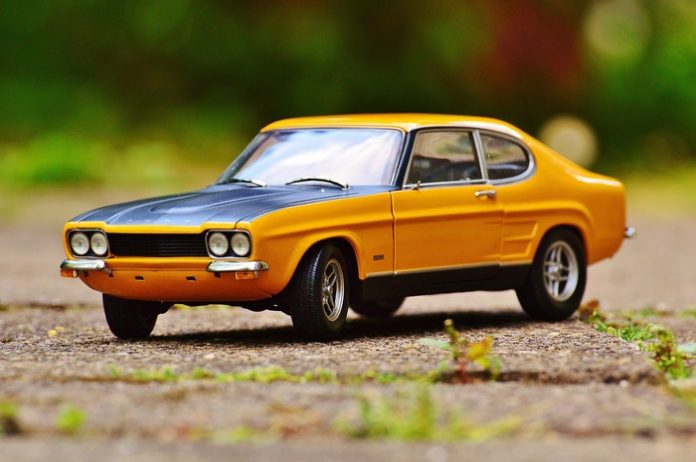Buying a non-running car will always have its risks and you must take precautions to ensure that the operation is not a disaster. Do not rush the process—try to inform yourself, compare and choose what you want.
Non-running cars have their advantages and disadvantages. Among the latter, the general negligence regarding the treatment of the vehicle by the previous owner is a main one. It’s easy for the seller to conceal possible faults. That’s why conducting a car history check is a priority for many consumers. Paying attention to some details and checking that all the components are in the correct condition can lead to a good purchase.
We have compiled a series of tips for buying a non-running car to help you discover possible shortcomings.
1. What Do You Need?
Do you travel many kilometers by road? Do you need to take your children and transport many things? Do you have to cross states? Are you worried about consumption? The first thing you have to think about is what type of vehicle you need. Do you prefer a compact or utility vehicle?
Once you have chosen this, you can now focus on the brands or models. Do you like powerful cars? Do you value security elements? Looking for a big and comfortable car? Whether or not we buy non-running cars on a frequent basis, it’s always good to keep these questions in mind. These are some of the things you should ask yourself before opting for a model.
2. Reading Is Knowing
Start reading about the cars that best fit your criteria. Assess prices, photos, tips and reports on various models. The more information you get, the more difficult it will be for them to try to scam you.
3. Choose Between an Individual or a Specialized Company
Established companies will offer greater purchase guarantees should a vehicle have problems or hidden defects, which means you will be much less likely to need the services of a good car accident lawyer in the future. Purchasing from an individual can lead to a more difficult, expensive and complicated situation should there be issues.
4. Exterior Car Inspection
- Front: Check the headlights. If one appears newer than the other, this may indicate that it has been replaced… possibly as a result of a hit. Another important inspection point is the joint between the windshield and the roof. Check that it is completely straight and that there are no ripples.
- Sides: Pay close attention to the doors. If they do not close perfectly it is possible that they have been repaired and the car has suffered a hit in that area. A key point is the area of the hinges. Check that there are no recent welds or that the paint changes tone (it could have gone through an accident). If they’re generally worn down, rust and bad plastic rubber will be easy to find.
- Back: The trunk is an area where serious problems can be detected, since it’s not in plain sight. Possible repairs are more expensive. Make sure that there are no strange welds in the area of the spare tire. Lift the carpet to check if the car has been repainted. This would indicate a passage through the sheet metal. If you’re setting up your garage for more in-depth inspections and repairs, My Garage Supplies has helpful information on 2-post car lift space requirements that can make planning much easier
- Non-approved elements: If the car has a spoiler, underbody, lights or wheels that are not listed in the technical sheet, go to a technical station to check if they exceed it.
- Tow ball: Check if it is on. If this is the case, the engine, brakes or suspensions have probably undergone an overload, which shortens their useful life.
5. Interior Inspection
Abandon the purchase if a warning light comes on or any of the controls do not work: air conditioning, lights, indicators, heating, etc. If there are loose plastics or you notice a strange smell, beyond tobacco, this is not a good sign—especially if it smells like gasoline!
6. Mechanical Inspection of the Car
Mechanical failures are more difficult to detect with the naked eye. Luckily, now there are insurance policies that cover mechanical failures in non-running cars (and that serve as a guarantee in the purchase/sale).
7. Be Careful with the KM You Mark
Nowadays, it is difficult for the kilometers of a car to be falsified. For a few years now, when passing the ITV, the number of kilometers that the car has at the time of inspection is noted. There are also cars verified by independent companies (which evaluate km and mechanical condition), with which you will not have a problem.
The needles of the motor give clues. If when the car is stationary it does not show 0 revolutions per minute or 0 km/h, it is possible that the needles have been taken out of their original position (this also happens with other indicators, such as the temperature needle, the oil pressure or the fuel level gauge).
Other elements such as a very worn steering wheel or driver’s seat (and the controls that are used the most, such as those for windows, radio and air conditioning) can cause suspicion about a car with few kilometers. The quality of the materials used comes into play here. It’s different for each make and model, but when in doubt you can always check the condition of those of the same model and of a similar age.
8. Are the Papers in Order?
At this point, request an extended report of the vehicle with the DGT. For a very small amount of money (8 euros) you can check if the car has any embargo (the new owner would be responsible for lifting it), and if it has been imported and the number of previous owners (which may not coincide with the data revealed by the seller).
The procedures and documentation to transfer a car are really simple. You only need a purchase/sale contract, the circulation permit, the ITV card and the receipt of the last registration tax, in addition to the buyer and seller ID. It can be done through an agency or yourself at the provincial directorate of the DGT after paying a tax at the Treasury.
Here it is really important to check that both the registration plate and the VIN number match those in the documentation. If not, it is most likely a stolen car.
9. Beware of Purchases Abroad
It is common to find fake advertisements found abroad at a very low price. The scammers, who are behind these ads, will want you to transfer an amount of money as a reserve. If the car is abroad, do not look into it.
10. Ask the Seller Questions
Do not hesitate to ask the seller about everything that concerns the vehicle in question. How many owners has it had? How have they used it? Regarding its mechanical history, has it had accidents? How much does it consume? What are the reasons for the sale? Any information you obtain can help you to make a decision or to try to negotiate the price.
Concluding Thoughts: Test the Car Before You Buy It
An assessment of a non-running car is very important. In the end, it is only by driving one that you can know how the vehicle works and how it really is. Drive on a route that includes city streets and highways (just like when testing a new car). Check the condition of the engine, gears, brakes, shock absorbers, etc. Look for strange sounds and don’t let the salesperson turn on the radio or open the windows during the test. Do not forget to test the reverse gear. Try to test the vehicle in as many situations as possible.
Find a Home-Based Business to Start-Up >>> Hundreds of Business Listings.

















































